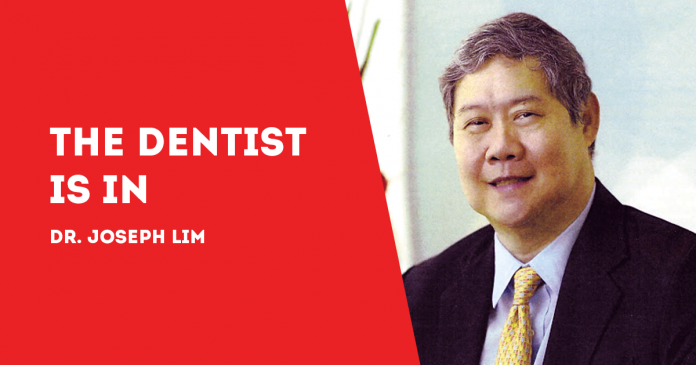
DENTAL professionals are at “high risk” for being infected and transmitting the coronavirus.
Transmission may occur though Aerosol Generating Procedures (AGP) such as ultrasonic scaling, use of a high-speed handpiece dental instruments, three-way syringe and high or low volume saliva ejectors and surgical suctions.
These risks are unique to dental interventions where aerosol generation, handling of sharp instruments and proximity of the provider to the patient’s oropharyngeal region is unavoidable,” states the “PDA Universal Practice Guidelines for COVID” issued on April 22 by the Philippine Dental Association (PDA).
The guidelines are meant for dental professionals and their staff in the restarting of their dental practice once local lockdowns are relaxed or lifted. We are also sharing the guidelines to the public so they may know of the “new normal” in dental clinics.
Patients shouldn’t be surprised, for example, upon seeing the clinic staff without fashion accessories. It’s the new normal: those involved with patient care are discouraged from wearing bracelets, earrings, necklaces and watches.
In the reception areas, there will be no magazines or newspapers because these are difficult to sanitize after each and every use. And patients will now be subject to new procedures for making appointments.
The guidelines “in no way supersede or replace any existing laws, ordinances or memoranda ordered by government health authorities, as it pertains to the practice of dentistry in this time of the COVID-19 health crisis,” the PDA states.
It emphasizes that each dentist is under professional obligation to follow the recommendations by government health authorities.
Because 80 in 10 of confirmed COVID-19 cases don’t display symptoms and unidentified cases are responsible for the infection of 79 percent of documented cases, the PDA urges that adequate precautions must be made in the dental office. That means to prevent and avoid exposing both dentists and patients to cross contamination.
For example, the layout of the clinic should now ensure that appropriate infection control can be efficiently carried out and clean areas are preserved from contamination.
The patient screening area must have hand disinfection facilities such as 70 percent alcohol. If possible, shoes must be disinfected before entering the clinic.
Social distancing of two meters apart must be the norm in the waiting area. Difficult to disinfect items like reading materials, toys and other objects that may be touched by others should be removed.
Dental staff must be trained in patient screening, proper donning and doffing of Personal Protective Equipment (PPE) and how to prepare and disinfect the operatory and other areas in the clinic. They must know how to sterilize instruments. Billing and receiving payment must be conducted in a sanitary way.
The room where actual procedure is made should be isolated from other areas of the clinic to prevent aerosols from escaping to the other areas of the dental facility.
Dentists, dental assistants and receptionist should receive seasonal flu vaccinations. All personnel with COVID- or flu-like symptoms (fever, cough, general malaise) should not be made to report to work. They are classified as “suspect” under Department of Health guidelines.
Self-monitoring for worsening of symptoms (fever, joint and muscle pain, headache, dry cough, sore throat, shortness of breath, gastro-intestinal pain/diarrhea) is advised. And should symptoms worsen, they should report to the nearest hospital.
For patients, the PDA recommends a “double triage”. First, patients are screened on the phone to determine the urgency of care, find out area of current residence and possible contact with confirmed COVID patients. Treatment options and infection control protocols in the clinic are explained.
Second, during the actual appointment, a patient is given a questionnaire checklist for possible symptoms and contact exposure. Patients sign informed consent on treatment options and waiver forms.
Appointments with patients are made according to the availability of PPEs. On this the PDA is strict: “NO PPE, NO TREATMENT”.
There are no walk-in patients except for emergencies. Prior appointments are required at all times.
In fact, patients are screened one to two days before by telephone or other non-contact means. If a non-contact screening is unavailable, clinics must have an assigned area for screening patients.
Appointments are scheduled apart to give enough time for disinfection of work areas. Posters remind patients to wear masks and avoid touching the face and about hand sanitizing, cough etiquette and social distancing.
***
Dr. Joseph D. Lim is a former Associate Dean of the UE College of Dentistry, former Dean of the College of Dentistry, National University, past president and honorary fellow of the Asian Oral Implant Academy, and honorary fellow of the Japan College of Oral Implantologists. Honorary Life Member of Thai Association of Dental Implantology. For questions on dental health, e-mail jdlim2008@gmail.com or text 0917-8591515./PN


